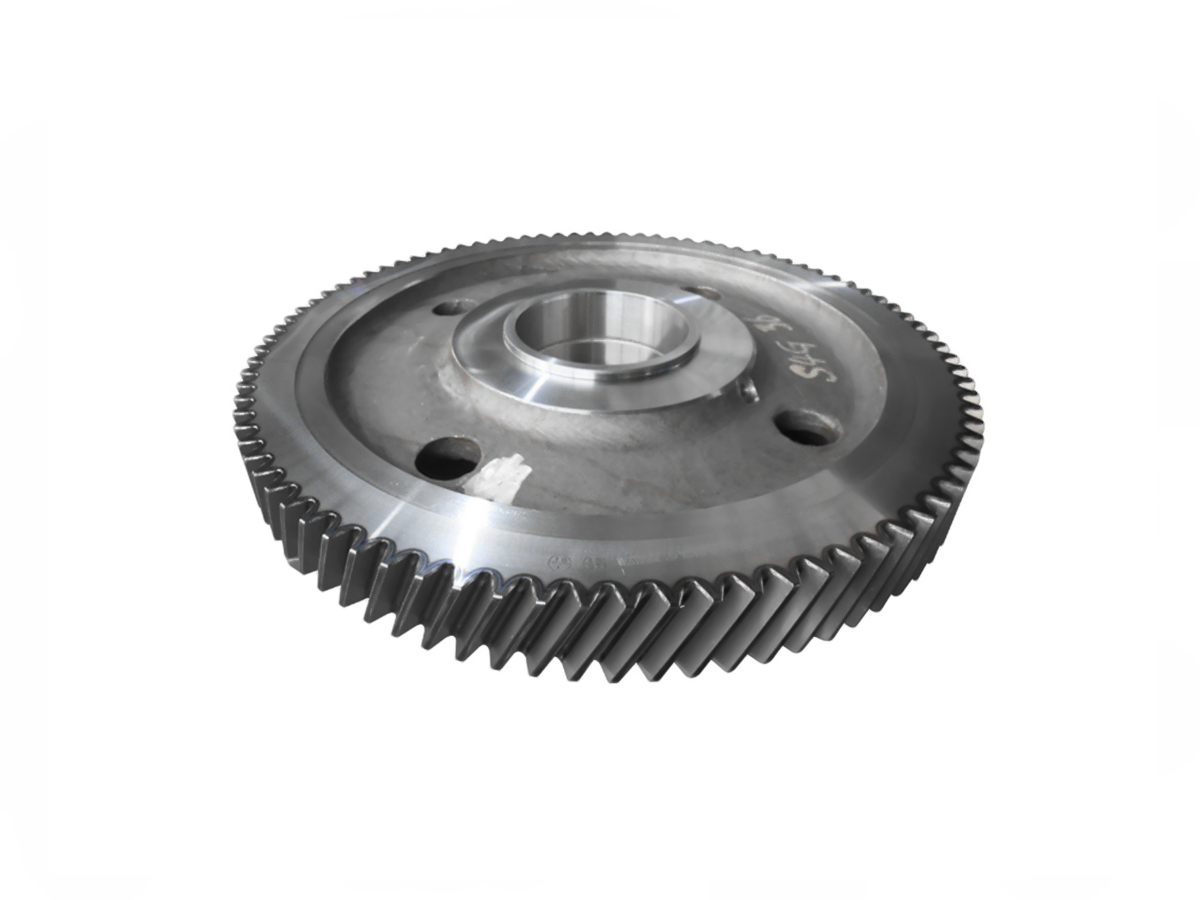Precision CNC Machined Gears for Agricultural Machinery
Introduction to CNC Machined Gears in Agricultural Equipment
Agricultural machinery frequently operates under challenging conditions, requiring durable and precisely engineered gears to maintain consistent performance. Custom CNC machining produces high-quality gears such as spur gears, bevel gears, helical gears, worm gears, and planetary gear sets, ensuring precise power transmission, smooth operation, and enhanced machine efficiency. Materials commonly selected for agricultural gears include alloy steels (4140, 4340), stainless steels (SUS316, SUS630), cast iron, and bronze alloys (C86300), chosen for their strength, toughness, wear resistance, and durability.
Through advanced CNC machining services, manufacturers achieve precise dimensional tolerances, optimal gear meshing, and superior performance in demanding agricultural applications.
Material Performance Comparison for Agricultural Gears
Material | Tensile Strength (MPa) | Yield Strength (MPa) | Hardness | Wear Resistance (ASTM G99) | Typical Applications | Advantages |
|---|---|---|---|---|---|---|
655-1000 | 415-655 | HRC 28-32 | Excellent (wear rate <0.1 mm³/Nm) | Spur gears, bevel gears | High strength, fatigue resistance | |
930-1310 | 725-1170 | HRC 40-44 | Very Good (wear rate <0.08 mm³/Nm) | Helical gears, precision gears | High hardness, excellent corrosion resistance | |
200-400 | 130-240 | HB 170-250 | Good (wear rate 0.15-0.3 mm³/Nm) | Large gear housings, worm gears | Superior vibration damping, stability | |
760-895 | 380-480 | HB 210-270 | Superior (wear rate <0.08 mm³/Nm) | Worm wheel gears, bushings | High load-bearing capacity, excellent lubricity |
Material Selection Strategy for CNC Machined Agricultural Gears
Selecting optimal materials is essential for long-lasting and efficient agricultural gear performance:
Alloy Steel 4140 is preferred for robust gears such as spur and bevel gears, offering high tensile strength (up to 1000 MPa), fatigue resistance, and excellent wear performance.
Stainless Steel SUS630 (17-4PH) delivers exceptional strength (tensile up to 1310 MPa) and corrosion resistance, ideal for precision helical gears operating under challenging environmental conditions.
Cast Iron is effective for large gear housings and worm gears due to its excellent vibration absorption, dimensional stability, and cost efficiency.
Bronze C86300 is ideal for high-load, low-friction gear applications such as worm wheel gears, providing exceptional lubricity and superior wear resistance.
CNC Machining Processes for Precision Agricultural Gears
CNC Machining Process | Dimensional Accuracy (mm) | Surface Roughness (Ra μm) | Typical Applications | Key Advantages |
|---|---|---|---|---|
±0.01-0.02 | 0.8-1.6 | Gear blanks, bevel gears | Versatile geometry shaping | |
±0.005-0.01 | 0.4-1.2 | Gear shafts, worm gears | High rotational accuracy | |
±0.002-0.005 | 0.1-0.4 | Precision gear teeth | Superior finish, exact tooth profile | |
±0.01-0.02 | 0.8-3.2 | Mounting holes, keyways | Precise positioning, easy assembly |
CNC Process Selection Strategy for Agricultural Machinery Gears
Selecting the appropriate CNC machining processes ensures optimal gear performance and reliability:
CNC Milling efficiently produces gear blanks and complex gear geometries with consistent dimensional accuracy (±0.01-0.02 mm), enabling versatile design capabilities.
CNC Turning delivers critical rotational accuracy (±0.005 mm) essential for manufacturing precision gear shafts, worm gears, and cylindrical gear elements.
CNC Gear Grinding offers exceptional accuracy (±0.002-0.005 mm) and superior surface finishes critical for gear tooth profiles, significantly enhancing smooth gear engagement and longevity.
CNC Drilling ensures accurate placement (±0.01-0.02 mm) of mounting holes and keyways, vital for effective gear assembly and alignment within gearboxes.
Surface Treatment Performance Comparison for Agricultural Gears
Treatment Method | Surface Roughness (Ra μm) | Wear Resistance (ASTM G99) | Corrosion Resistance (ASTM B117) | Surface Hardness | Typical Applications | Key Features |
|---|---|---|---|---|---|---|
0.4-1.2 | Excellent (<0.1 mm³/Nm) | Moderate (>500 hrs) | HRC 55-62 | Gear teeth, drive gears | Increased strength, improved fatigue resistance | |
0.2-0.6 | Superior (<0.05 mm³/Nm) | Good (>700 hrs) | HV 900-1200 | Precision gears, shafts | Enhanced hardness, wear resistance | |
0.8-2.0 | Moderate (0.2-0.3 mm³/Nm) | Good (>600 hrs) | Moderate (~HV 300-500) | Internal gears, gear assemblies | Improved lubrication, moderate corrosion resistance | |
0.6-1.5 | Moderate (0.2-0.4 mm³/Nm) | Good (>300 hrs) | Moderate (~HV 200-300) | Gear hubs, external gears | Corrosion resistance, anti-galling |
Surface Treatment Selection for CNC Machined Agricultural Gears
Selecting appropriate surface treatments enhances agricultural gear longevity and operational efficiency:
Heat Treatment significantly improves gear tooth strength and fatigue life (HRC 55-62), crucial for high-load drive gears.
Nitriding dramatically enhances surface hardness (HV 900-1200) and wear resistance, ideal for precision gear teeth operating under continuous friction.
Phosphating provides excellent lubrication retention and moderate corrosion resistance (≥600 hrs ASTM B117), beneficial for internal gear sets.
Black oxide offers moderate corrosion protection and reduces galling risk. It is suitable for externally exposed gears and assemblies.
Typical Prototyping Methods for Agricultural Gears
CNC Machining Prototyping: Highly accurate gear prototypes (±0.005 mm) for precise performance testing.
Rapid Molding Prototyping: Rapid fabrication of functional prototypes for real-world durability evaluations.
Metal 3D Printing (Powder Bed Fusion): Quick production of gear prototypes (±0.05 mm accuracy), enabling efficient iteration of gear designs.
Quality Assurance Procedures
Coordinate Measuring Machine (CMM) Inspection (ISO 10360-2) ensures gear dimensional accuracy within ±0.005 mm.
Gear Profile Inspection (AGMA 2015-1-A01) ensures optimal tooth profiles and meshing accuracy.
Surface Roughness Measurement (ISO 4287) verifies surface finishes (Ra ≤1.6 µm).
Mechanical and Fatigue Testing (ASTM E8/E466) confirms gear durability.
ISO 9001 Certified Documentation ensures compliance, traceability, and quality.
Related FAQs:
What materials are optimal for agricultural gears?
How does CNC machining improve gear performance?
Which surface treatments extend gear life?
Why prototype agricultural gears?
How is gear quality ensured during CNC production?

